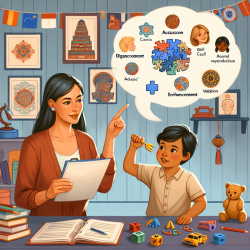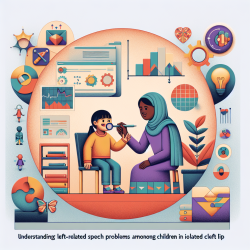As practitioners dedicated to improving outcomes for children with Autism Spectrum Disorder (ASD), it's crucial to stay updated with the latest research and tools that can enhance our diagnostic accuracy. One such tool is the Autism Diagnostic Interview-Revised (ADI-R), which has been widely used globally. However, the validation of its non-English versions is equally important to ensure its efficacy across different cultural contexts.
The recent study titled "Cross-Cultural Validation of the Polish Version of the ADI-R, Including New Algorithms for Toddlers and Young Preschoolers" provides insightful findings that can significantly impact our practice. This research validates the Polish version of the ADI-R (ADI-R-PL) and introduces new algorithms tailored for toddlers and young preschoolers. Here are the key takeaways and how you can implement them in your practice:
Key Findings
- High Reliability: The ADI-R-PL demonstrated excellent interrater reliability, internal consistency, and test-retest reliability. This means that the tool provides consistent results across different raters and over time.
- Good Diagnostic Validity: The study found high sensitivity (0.86–0.94) and specificity (0.85–0.87) for the original diagnostic ADI-R-PL algorithm domains. This ensures that the tool can accurately distinguish between children with ASD and those without.
- New Algorithms for Younger Children: The new algorithms for toddlers and young preschoolers showed robust reliability and good diagnostic validity, especially for clinical cutoffs. This is particularly important for early detection and intervention.
Implementation Strategies
Here are some practical steps you can take to integrate these findings into your diagnostic process:
- Adopt the ADI-R-PL: If you are working with Polish-speaking populations, consider incorporating the ADI-R-PL into your diagnostic toolkit. Its high reliability and validity make it a robust tool for diagnosing ASD.
- Utilize New Algorithms: For younger children (12 to 47 months), use the new algorithms provided in the study. These algorithms are age- and speech-development-appropriate, making them more effective for early diagnosis.
- Continuous Training: Ensure that your team is well-trained in administering and interpreting the ADI-R-PL. Consistent training can further enhance the reliability of the tool.
- Further Research: Encourage ongoing research and data collection to refine the tool further. Collaboration with other practitioners and researchers can provide additional insights and improvements.
By integrating these validated tools and new algorithms into your practice, you can enhance your diagnostic accuracy and provide more effective early interventions for children with ASD. For more detailed information, you can access the original research paper here: Cross-Cultural Validation of the Polish Version of the ADI-R, Including New Algorithms for Toddlers and Young Preschoolers.










